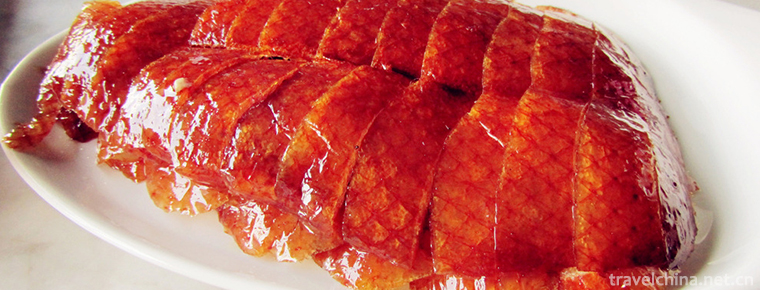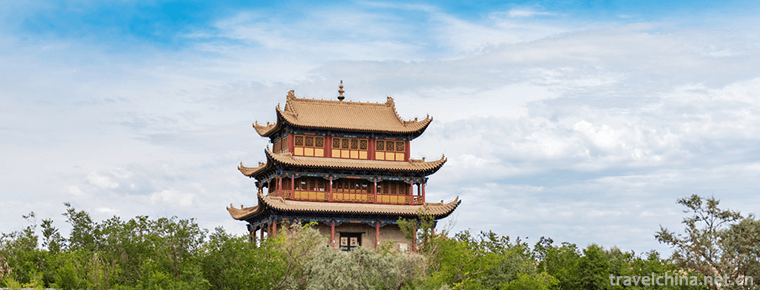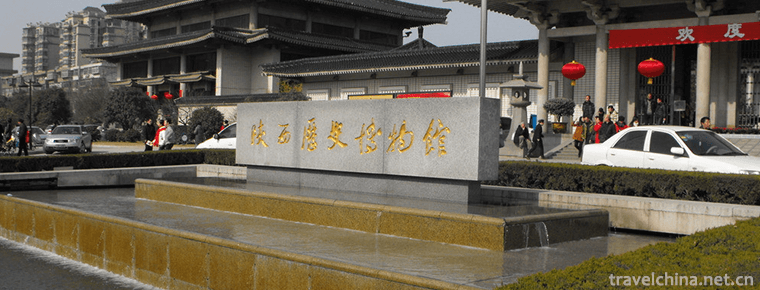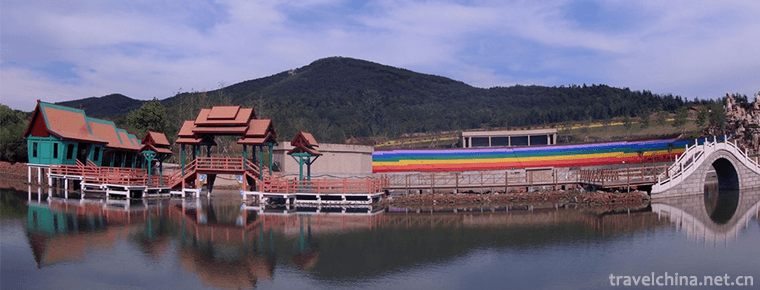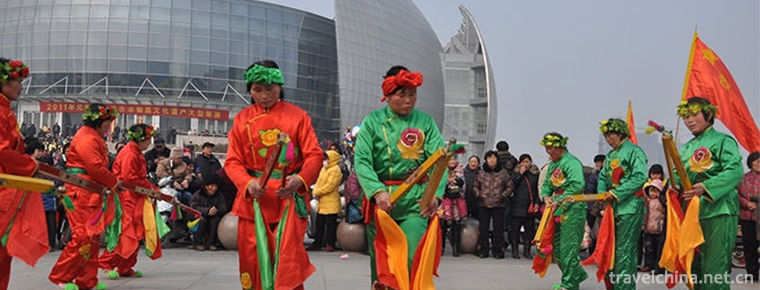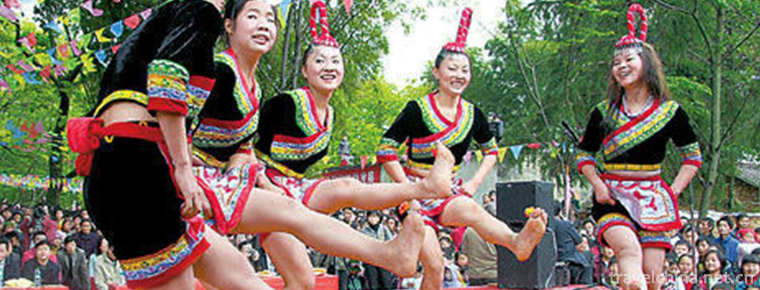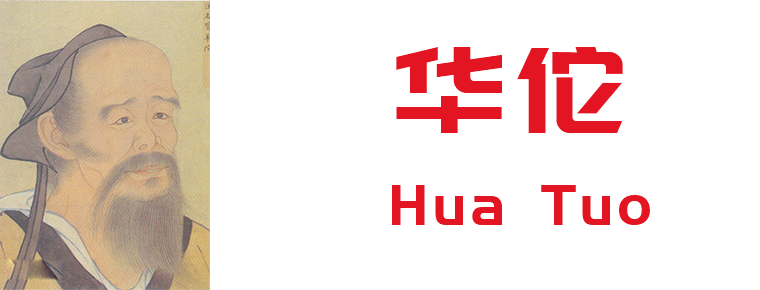Liang Ping Wood New Year Print
Liang Ping Wood New Year Print
Liangping Wood Printing New Year Painting belongs to Liangping's "Three Wonders" (Bamboo Curtain, New Year Painting and Lantern Opera), which is a kind of painting art drawn by the people in Liangping District of Chongqing to celebrate the New Year. It is a form of expression of Chinese folk art and has profound cultural, historical and academic value.
The content of Liang Ping's woodcut New Year's pictures is similar to that of other parts of the country, but the artistic treatment and the effect of the pictures are quite different. Its artistic characteristics are not only different from the elegance and delicacy of Yangliu Youth Paintings, but also from the bright and bright Mianzhu New Year Paintings, as well as from the vigorous and lively Weifang New Year Paintings. And it alone shows a kind of rough and wild, thick and dignified beauty of simplicity, with the simple and honest temperament of farmers in Chongqing mountainous areas. It is unique in Chinese folk New Year painting culture and has become a printmaking art that conforms to the customs of Li people's appreciation.
On May 20, 2006, the State Council of Liang Ping Wood Engraving New Year Pictures approved to be included in the first batch of national intangible cultural heritage list.
development history
In 1536, red paper brushing houses appeared in Pingjin Town, Liangping District. At that time, the brushing house used ink-printed sheet patterns and spirits on red paper to meet the needs of the people for marriage and funeral, and later began to produce New Year pictures. During the reign of Qianlong in the Qing Dynasty (1735 - 1796), the New Year Painting Industry established a guild named "Meige Club", which was funded by the owners of dyeing paper and New Year Painting Works to build "Meige Temple". It laid a foundation for the development of Liang Ping's New Year pictures.
Pingjin Town's earliest New Year Painting Workshop and sales business name "Yuanxing" (formerly known as Brushing Workshop), from brushing red paper to production of New Year pictures, tools are simple, technical level is not high, variety is not many, door god printed on red paper, apply red and black two colors, simple tone.
In Lan Xuanqing's Bamboo Branch Ci, a collection of Gaoliang Qiying in the early Qing Dynasty, Liang Ping's New Year paintings are described as follows: "Mr. Xiapiping City, Guanlubang has a new yellow color, and is more famous in Beijing Province, Golden Water Jia Tumen Goddess." The "god of Tumen" here is Liang Ping's New Year painting.
Liangping woodcut New Year pictures developed in Kangxi (1661 - 1722) and Yongzheng (1722 - 1735) of the Qing Dynasty, and flourished in the late Qing Dynasty and the early Republic of China.
In the first year of Jiaqing in Qing Dynasty (1796), Xu Weichen founded Xinli, whose production of New Year pictures changed from simple to complex. Use a variety of artistic techniques, mainly set-color printing, one-color one edition, five or six times less, more than twelve or three times. Characters face painted slightly, mostly in the cheek smeared two small oval peach red, interesting, rare for other New Year paintings.
At the end of the Qing Dynasty and the beginning of the Republic of China, Liangping Wood Engraving Workshop developed into forty or fifty, concentrating in the two towns of Pingjin and Yuan Yi, each accounting for half of the streets of the two towns, known as "Half Section Brushing House Street". There are six or seven hundred employees, of whom seven or eighty are engaged in the production of New Year pictures every day.
From 1913 to 1934, Liang Ping's woodcut New Year pictures entered its heyday, producing millions of pieces every year. In addition to meeting the local farmers'annual demand, they were also exported to Shashi, Yichang, Wuhan, Hanzhong and Guiyang.
In the 1930s and 1940s, Liang Ping's woodcut New Year pictures were collected by museums in the Soviet Union, the United States and France, or by Oriental Art enthusiasts.
With the change of history, Liang Ping's woodcut New Year pictures gradually declined, and the handicraft workshop stopped production successively in 1958.
Through the "Four Qing Dynasty" and "Cultural Revolution" and other movements, Liang Ping Wood New Year Printing, a folk art form, is almost on the verge of extinction.
After the Cultural Revolution, the cultural policy was adjusted. As a folk art heritage, Liang Ping's woodcut New Year pictures were put on the agenda of rescue.
In 1978, in order to revitalize the art of Liangping wood engraving, Liangping Cultural Bureau began to collect New Year pictures in Pingjin and other places. Through various efforts, more than 20 varieties and nearly 100 Lao Liangping New Year pictures were collected.
In 1982, Liang Ping New Year Picture Research Society was founded. Then, the "Research Society" launched the first "Liang Ping New Year Painting Research and Creation Class". Experts and professors were invited to copy and innovate some of the old Liang Ping wood engraving New Year pictures by using more than 100 examples of old Liang Ping wood engraving New Year pictures collected. After Chongqing Publishing House selected five of them and published them, a new Liang Ping wood engraving New Year pictures was set up. Creation boom.
Subsequently, Liang Ping Wood New Year Print Creation Classes were held successively, and a group of potential creators were recommended to the Academy of Fine Arts for further study, forming a talent array to promote the development of Liang Ping Wood Print New Year. So far, Liang Ping's woodcut New Year pictures have entered a new historical period. A large number of New Year pictures with both the flavor of the times and the characteristics of Liang Ping's New Year pictures have been published in Yunnan, Guizhou and Sichuan, and six local folk art workshops of New Year pictures and flower and paper have been restored.
In the autumn of 1982, Liang Ping's woodcut New Year pictures went out of Liangping area and went on tour to Chengdu, Chongqing and Wanzhou.
In October 1993, Sichuan Academy of Fine Arts invited Liang Ping's New Year's Painting to hold Liang Ming's folk art exhibition in the Academy. Liang Ming's New Year's Painting entered the higher art academy for the first time.
In 1994, as the main exhibit of the Three Gorges Folk Art Exhibition, Liang Ping Wood Engraving New Year Painting went to Beijing China Art Museum and exhibited at the 8th China Fine Arts Exhibition. Liang Ping Wood Engraving New Year Painting once again mounted the temple to show the achievements of Chinese art.
At the end of the 20th century, Liang Ping-mu's traditional New Year prints were included in the large-scale albums of Chinese Art Complete Works, Chinese Folk Art Complete Works, Three Gorges Folk Art and Folk New Year Pictures. With the change of modern social environment, folk customs have also undergone great changes. In this context, Liang Ping wood engraving New Year pictures gradually fade out of people's lives, some New Year pictures and engraving treasures scattered among the people, some inheritors died successively, the skills of New Year pictures were scarce, endangered, urgent need for rescue and protection.
On February 16, 2005, four special stamps with postage, made of four Liangping wood engraving New Year pictures, began to be issued nationwide and were included in the Chinese Folk Art Postbook.
In 2006, Liang Ping's woodcut New Year pictures were listed in the national intangible cultural heritage protection list.
artistic value
As the only place of origin of New Year pictures in Chongqing, Liang Ping's woodcut New Year pictures are well known at home and abroad for their unique historical value, academic value and unique artistic charm. Works are seasonal, regional, collective, national, inheritance and variability. Many traditional New Year pictures are closely related to myths and opera stories. Most of them have a long history of development. In the process of development, they have integrated the orthodox (official) and foreign cultural influences and gradually become highly ornamental art commodities.
Liang Ping's woodcut New Year pictures are produced in thousands of families of small-scale peasant economy, handed down from generation to generation, and follow their own development trajectory. They support the world of popular art and the spiritual world of workers in the vast countryside of Southwest China. This contains the most basic national self-improvement spirit and profound cultural connotation of the Chinese nation.
Liang Ping's woodcut New Year pictures are not only works of art, but also commodities. Liang Ping's New Year's Picture is an art that combines the Creator with the appreciator (consumer), and has the function of material use and "spiritual practicality". It mainly meets the needs of material and spiritual life of workers, and has the characteristics of seasonality, regionality, collectivity, nationality, inheritance and variability.
Influenced by witchcraft culture, Liang Ping's woodcut New Year pictures have gradually changed from "entertaining gods" to "entertaining people" from the reappearance of peach charms. Liang Ping's New Year's Pictures, guided by the special folk "painting tricks", are very suitable for the artists and peasants who are not very literate and illiterate, because they are rhymed in the same way, easy to remember and memorize. With its distinctive personality, Liang Ping's woodcut New Year pictures have become popular works of art. This is where Liang Ping's New Year paintings are valuable and cultural values lie.
In the course of historical development, Liang Ping's woodcut New Year pictures inherited the fine tradition of pursuing the perfect unity of realism and Romanticism in the creation of Chinese national culture, and endowed the simple folk New Year pictures with its unique aesthetic charm and great artistic appeal. Liang Ping's traditional woodcut New Year pictures were well-known in the Qing Dynasty in Beijing Province and sold well in Southeast Asia. During the Anti-Japanese War, Americans helped repair the airport in Liangping, and Liangping wood engraving New Year pictures were taken to museums such as the Soviet Union, the United States and France or collected by Oriental Art collectors. It became one of the major export commodities of Liangping County at that time, so that Westerners could understand the oriental folk art and truly go to the world.
The vitality of Liangping wood engraving culture has nurtured generations of Liangping painters. It has continued and expanded in the way of life of Liangping people from generation to generation. The artistic nourishment of Liang Ping's New Year pictures has nurtured a generation of artistic talents. In turn, they have influenced the development of Liang Ping's New Year pictures and promoted the rapid warming of Liang Ping's woodblock New Year pictures and the establishment of aesthetic orientation.
Liangping woodcut New Year pictures belong to traditional woodcut New Year pictures and are one of the origins of New Year pictures in Southwest China. It is as famous as Mianzhu New Year Picture in Northwest Sichuan and Jiajiang New Year Picture in South Sichuan, also known as the three major New Year Pictures in southwest China.
Inheritance and protection
Inheritance situation
With the change of the times, modern printing technology has replaced the traditional woodblock printing technology with its exquisite quality. Traditional New Year paintings in Liangping have basically no market, no economic returns, no one to create naturally, many local folk artists and artists have to change their ways to make a living, the shrinking market, the loss of creative personnel, has made Liangping New Year paintings in a "shock" situation. Liang Ping's New Year pictures did not enter the market, but entered the museum.
Since the reform and opening up, Liangping District has always attached great importance to the inheritance and protection of Liangping woodcut New Year pictures. After extensive visits and collections, the County Administration of Cultural Relics now collects more than 20 varieties, more than 100 old-age paintings and more than 50 engravings, of which more than 80 are identified as second-class national cultural relics.
In order to protect and inherit Liang Ping's woodcut New Year pictures, Liang Ping District allocated special funds to establish a showroom and mounted Liang Ping's old age pictures with 100,000 yuan. We have vigorously organized the creation of New Year's paintings and published more than 500 works in newspapers and magazines at home and abroad. Liang Ping's New Year Picture Children's Creation Class of County Experimental Primary School trains nearly 200 pupils every year to learn to create children's New Year Pictures. Spring and Mugui are selected as the new primary school art textbooks compiled by the Ministry of Education. In 2007, the school launched the municipal research project of "Creation and Education of Primary School Students'New Year Pictures", and achieved periodic results. After contacting and striving for by the Propaganda Department of the county Party committee, Sichuan Academy of Fine Arts established two practice bases and one research base for Liangping New Year Pictures in Liangping.
In 2007, he compiled and published the monograph Liang Ping Wood Printing New Year Picture. In 2010, Liangping New Year Painting Exhibition Workshop was basically completed. Experts from Nanjing Museum were invited to repair and mount 19 precious old paintings. Among them, the old paintings "Silang visits his mother" were included in the "Complete Works of Chinese Art" and the "Complete Works of Chinese Folk Art" were included in the "Complete Works of Increasing Officials and Promoting Judges".
Liang Ping's New Year Picture Creation Class was set up in the County Experimental Primary school. Every year, nearly 200 pupils were trained to learn to create children's New Year Pictures and create 50 new woodcut New Year Pictures. Sichuan Academy of Fine Arts has set up two practice bases and one research base for Liangping Wood Engraving New Year Painting in Liangping, and Chongqing Normal University has set up Liangping New Year Painting Research Base for Master of Fine Arts in Liangping. The State Post Office has issued Personalized Stamps for Liangping Wood Printing New Year Pictures, Special Postbooks for Liangping Style and Postcards for Liangping Wood Printing New Year Pictures. Liang Ping Wood Printing Industrialization Project was started.

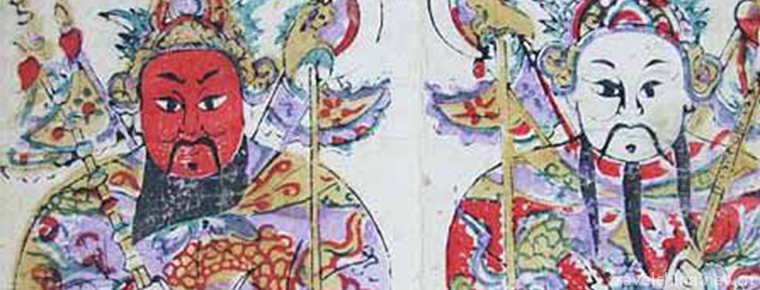
-
Cantonese crispy fried pork
Crispy fried pork is a traditional dish with color, aroma and taste. It belongs to Guangdong cuisine department. This dish is one of the classic Cantonese cured wax.
Views: 201 Time 2018-11-02 -
Jiayuguan cultural relics scenic spot
Jiayuguan: World Cultural Heritage, National AAAAA Tourist Scenic Spot, National Key Cultural Relics Protection Unit, National Patriotic Education Demonstration Base..
Views: 158 Time 2018-12-12 -
Shaanxi History Museum
Shaanxi History Museum, China's first large-scale modern national museum, the first batch of China's "AAAA" class tourist attractions, known as the "ancient capital pearl,.
Views: 142 Time 2019-02-08 -
Xingtai Grand Canyon Tourist Area
Xingtai Grand Canyon is a national AAAA scenic spot, a national key scenic spot and a national geological park of China. It is located in Hejiaping Village, Luozhen, Southwest Road.
Views: 239 Time 2019-02-26 -
Snow Mountain Rainbow Valley Scenic Area
Xueshan Rainbow Valley Scenic Area is located 3 kilometers east of Yishui County, Shandong Province. It mainly includes Snow Mountain, Dashan and Mashan, with a total area of 2 million square meters..
Views: 108 Time 2019-02-26 -
Nanxian Flower Drum
On May 20, 2006, the local flower drum of Nanxian County was listed in the first batch of national intangible cultural heritage list with the approval of the State Council..
Views: 117 Time 2019-06-07 -
Shangyang Dance
Shangyang Dance originated in the northern part of Juancheng County and spread around Li Jinshitang Town and Old Town. It is represented by Xinggrang Village of Li Jinshitang Town. According to textua.
Views: 404 Time 2019-06-13 -
March 3 She Nationality
March 3rd is the traditional festival of She nationality. Every year in this festival, a grand song is held, and ancestors worship Valley God, singing and dancing. It is very lively. In addition, we h.
Views: 183 Time 2019-06-14 -
Hua Tuo
Hua Tuo (about 145 ad - 208 AD), the character is changed into one. Pei country Qiao County People, Eastern Han Dynasty The famous medical scientist at the end of the year..
Views: 217 Time 2019-09-07 -
Bai Pu
Bai Po (1226 - about 1306), formerly known as "Heng", Ren Fu, later renamed Pu, the word is too plain, Lanlan Valley, Han nationality, ancestral home state (now Shanxi) Hequ ) Nanjing's Kaif.
Views: 167 Time 2019-09-11 -
Suining first industry
In 2019, the total output value of agriculture, forestry, animal husbandry and fishery in Suining will reach 30.998 billion yuan, an increase of 3.4% over the previous year..
Views: 332 Time 2020-12-16

